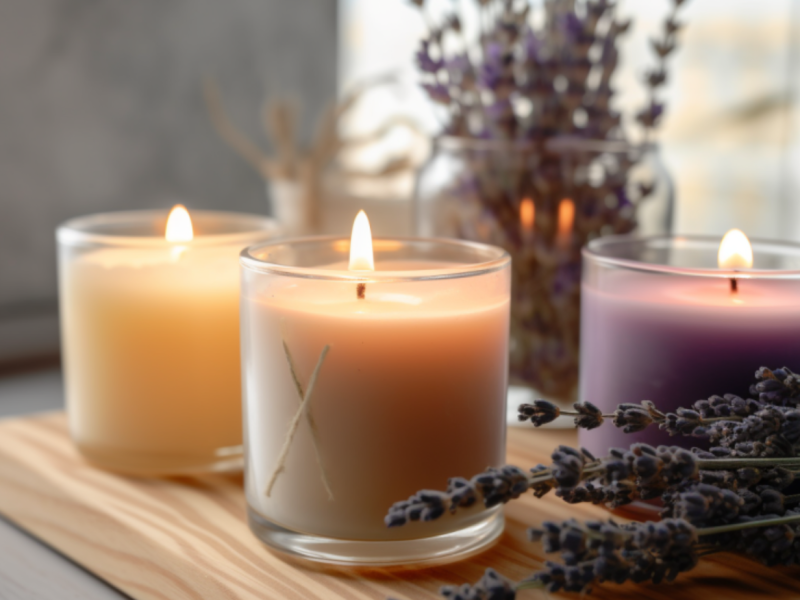Ever lit a beautifully crafted candle only to find its fragrance barely noticeable? That’s where the concept of scent throw comes into play — an essential term in the world of candle making. It refers to how well a candle releases its aroma, both when it’s unlit (cold throw) and when it’s burning (hot throw).
One of the most frequent questions we receive at Holistic Emporium is: “How can I enhance my candle’s scent throw?” Let’s explore the key elements that can influence this and how you can tweak your process for beautifully fragrant results.
1. Wax Type & Temperatures
The type of wax you choose lays the foundation for your candle’s performance. Natural waxes like soy and beeswax differ significantly from synthetic ones such as paraffin and gel wax.
- Soy Wax: Derived from soybean oil, it has a softer texture and retains scent longer.
- Paraffin Wax: A by-product of petroleum, it’s harder and often delivers a stronger scent throw initially.
Your fragrance’s performance also hinges on the temperature at which it’s added. Too hot and you risk losing delicate notes; too cold and the fragrance may not bind well with the wax. Always follow the wax manufacturer’s guidelines and consider slight adjustments for your specific climate.
2. Wick Type & Sizing
The wick is more than just a means to ignite your candle — it’s a key player in scent distribution.
- Wooden Wicks: Often provide a more robust scent throw and a lovely crackling ambience.
- Cotton Wicks: Traditional, but require precise sizing.
Choosing the correct wick size ensures an even melt pool, allowing the fragrance to disperse effectively. A wick that’s too small may tunnel, leaving unscented wax behind.
3. Jar or Container
Yes, your jar matters! The shape and size can directly impact the way your candle throws scent.
Smaller openings restrict oxygen flow, limiting the flame’s ability to burn efficiently and release fragrance. A wider jar paired with a properly sized wick allows for better airflow and scent distribution.
4. Fragrance Type & Load
Whether you’re using fragrance oils or essential oils, your choice will influence the scent throw.
- Fragrance Oils: Engineered specifically for candles, they often yield a stronger throw.
- Essential Oils: More natural but may offer a lighter scent profile.
Some fragrances are naturally bold, while others are delicate. Respect the character of your chosen scent and adjust your load accordingly.
5. Additives & Blends
Enhance your wax with additives like coconut oil or stearic acid to improve scent throw. You might also experiment with custom blends, such as: Soy & Paraffin Wax
These blends can offer the best of both worlds — combining scent strength with longevity.
6. Curing Time
Curing is the magical period when your candle matures, allowing the wax and fragrance to meld beautifully. Depending on your wax type, curing can take anywhere from 3 to 14 days. The longer the cure, the richer the scent experience.
Final Thoughts
Improving scent throw is an art of patience and precision. Evaluate each aspect of your process, tweak where necessary, and keep thorough notes for future reference. With time and testing, you’ll craft candles that truly captivate the senses.
Happy pouring from all of us at Holistic Emporium — may your candles burn bright and smell divine!


